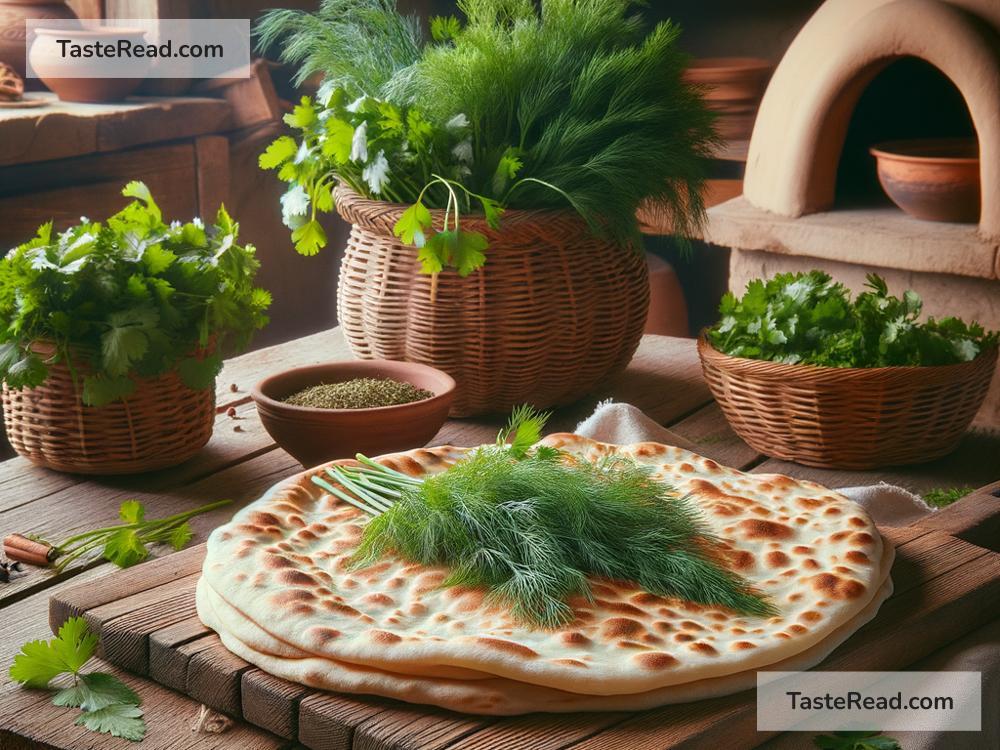Discovering the Herbal Infusions in Armenian Lavash Baking
When most people think about Armenian food, one of the first things that comes to mind is lavash—Armenia’s iconic flatbread. Lavash is more than just a bread; it’s a part of Armenian culture, history, and daily life. This thin, soft flatbread is so beloved that it was added to UNESCO’s Representative List of the Intangible Cultural Heritage of Humanity in 2014. But did you know that lavash often carries the flavors of herbs and plants that are rooted in Armenian traditions?
Armenians are famous for their love of nature. This respect for the land and its bounty is beautifully expressed through their food. When it comes to baking lavash, Armenians sometimes enhance its simplicity with herbal infusions, turning it into a flavorful work of art. In this article, we’ll take a closer look at how herbs play a role in the art of lavash-making and why this ancient bread is so special.
What is Lavash?
Lavash is a flatbread that is traditionally made from just a few ingredients—flour, water, and salt. The dough is rolled into thin sheets and baked in a tonir, a traditional clay oven that is built into the ground. The tonir reaches high temperatures, which makes the bread cook quickly. The result is a light, flexible bread that can be eaten fresh or dried into crunchy sheets.
Lavash is known for its versatility. It can be used as a wrap, rolled with cheese or meats, or even crumbled into soups. In Armenian households, lavash is often served during big family meals or used to prepare dishes for special occasions. But lavash isn’t just about feeding people—it’s a cultural symbol of hospitality, togetherness, and sharing.
Herbs in Armenian Cuisine
Armenians have a deep connection with nature, and this is reflected in their cooking. Fresh herbs and greens play a major role in Armenian cuisine because the country’s mountainous terrain offers a wide variety of wild plants. Some of the most commonly used herbs include tarragon, mint, cilantro, and parsley. These fragrant herbs not only add flavor to dishes but also bring health benefits—a practice that has been passed down for generations.
Interestingly, these herbs often make their way into lavash baking, too. While traditional lavash is made without any added herbs, creative bakers sometimes add wild greens and aromatic plants into the dough to give the bread new layers of flavor. This marriage of bread and herbs reflects Armenia’s agricultural richness and the people’s appreciation for nature’s gifts.
Herbal Infusions in Lavash
Adding herbs to lavash doesn’t change its fundamental simplicity, but it does enhance the eating experience. Different families or regions may use unique combinations of herbs, depending on local traditions, tastes, and the plants available nearby. For example:
-
Tarragon: Known for its slightly licorice-like flavor, tarragon gives lavash an earthy and aromatic touch. It pairs wonderfully with savory fillings like cheese or grilled meats.
-
Mint: Mint adds a fresh, cool note to the bread and works well with both sweet and savory dishes. Armenian mint has a bold flavor, making it stand out in lavash.
-
Dill: The feathery dill plant is common in Armenian cooking and is prized for its light, tangy flavor. Dill-infused lavash is a perfect match for creamy dips like hummus or bean spreads.
-
Wild Greens: In Armenia, wild greens such as malva (mallow) or spinach-like plants are often gathered from the countryside. These greens can be blended into the lavash dough or added as fillings in a rolled lavash snack.
The process of infusing lavash with herbs can vary. Some bakers chop fresh herbs and mix them directly into the dough before it’s rolled thin. Others sprinkle dried herbs on top of the bread before baking. Both methods allow the natural oils and aromas of the plants to seep into the bread as it cooks in the tonir.
The Cultural Connection
The use of herbal infusions in lavash isn’t just about taste—it’s also about tradition and connection to the land. By incorporating wild plants or agricultural herbs into their bread, Armenian bakers celebrate their heritage and their surroundings. The herbs remind people of the fields, mountains, and meadows that are so central to Armenian life.
For tourists visiting Armenia, tasting herbal-infused lavash is not only a treat for the palate but also an opportunity to explore the country’s culinary traditions. Whether at a local market, a roadside bakery, or a family home, you’re likely to encounter different flavors and stories tied to lavash.
Conclusion
Armenian lavash is a simple yet remarkable bread that embodies the country’s love for food, family, and culture. While the traditional version is incredible on its own, adding herbal infusions brings out the creativity and resourcefulness of Armenian bakers. Whether it’s mint, tarragon, dill, or wild greens, these herbs give lavash a unique identity that celebrates the richness of Armenian nature.
For anyone who loves bread—and especially for those curious about Armenian traditions—exploring herbal-infused lavash is a delicious and rewarding adventure. Every bite tells a story of community, connection, and the bond between people and the land. So next time you enjoy a piece of lavash, take a moment to savor the flavors and reflect on the generations of care that went into making it.


